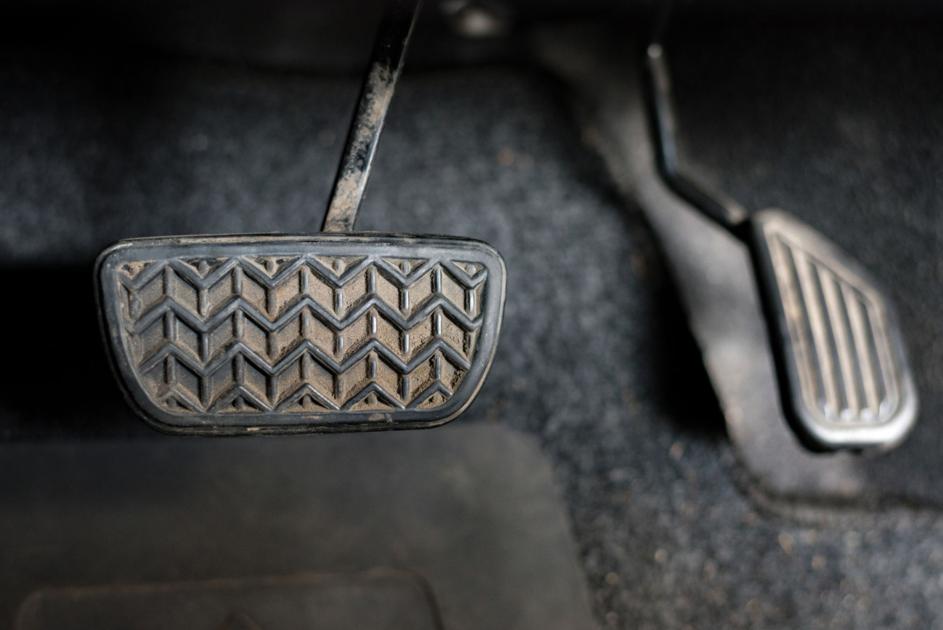
Q: I recently took my 2014 Kia Soul in for its 7,500-mile service. I have a little over 31,000 miles on it; we are seniors and don’t do a lot of driving. Our service adviser told us all was well except for the battery. It is three years old, and the climate here in Las Vegas doesn’t favor them with a long life.
On looking over the multipoint inspection sheet at home, I noticed that for “front brakes remaining” it showed 5mm and 7mm on rear. Is this something to be concerned about regarding the difference? We have it serviced twice a year, so I’m hoping our service adviser would have told us if there was something amiss.
B.P., Las Vegas
A: As a rule of thumb, I suggest replacing the pads when there is 4-5 mm remaining. (No, I do not have metric thumbs.) Front brakes usually wear faster than rears, doing up to 80% of the work. The difference in thickness is normal.
Q: I enjoy reading your column but thought that it may be appropriate to comment on your response to the jake brake question. Your response said the only option for reducing the noise caused by jake brakes is to ban their use. My experience tells me that the majority of heavy-duty trucks built in the U.S. over the past few years have been built with some type of engine compression brake. But the majority of these trucks are not noisy when using the compression brake.
The noisy trucks are those where the driver has removed the muffler. A better response would be that the best option to reduce the noise caused by compression brakes would be to require drivers to have a standard OEM muffler and exhaust system on their truck.
C.W., Minneapolis
A: I hear you. But I did not suggest banning jake brakes. I suggested restricting their use in residential areas. In fact, I would appreciate if drivers would avoid any engine braking in town. Speeds are low and service brakes should suffice.
Q: Your response to the reader who learned there was no spare tire in their 2013 Cadillac SRX is correct. I have a 2010 and had the same issue. I purchased a spare tire complete with the jack for peace of mind if I ever had a blowout. If, and when, I sell or trade in my 2010, I’ll put the pump and sealer back in the car and then sell the spare tire and jack to someone who has the same needs as I did.
R.U., Lemont, Ill.
A: A good solution and one that many other motorists have chosen.
Q: My father has a 1923 Packard. He has to change his spark plugs often due to (excuse my description because I am not a big car guy) gunk build up. He didn’t have this problem when he used leaded gas. It’s hard to find that nowadays. Is there some kind of additive to make the gas “leaded” or another solution?
T.P., Buffalo Grove, Ill.
A: Spark plug fouling may be due to oil getting past the intake valves. The valve seats regress after prolonged unleaded gas use. In bygone days, lead would deposit on the valve seats effectively giving them a cushion.
Having never used them, I can’t vouch for lead substitutes sold in auto parts and other stores. It is worth a try, but if the seats are damaged, no magic in a bottle will repair them.
Send questions along with name and town to Motormouth, Rides, Chicago Tribune, 435 N. Michigan Ave., Fourth Floor, Chicago, IL 60611 or motormouth.tribune@gmail.com.
"auto" - Google News
June 28, 2020 at 11:15AM
https://ift.tt/2AaBiJv
When to worry about breaks | Auto Features | nny360.com - NNY360
"auto" - Google News
https://ift.tt/2Xb9Q5a
https://ift.tt/2SvsFPt
Bagikan Berita Ini














0 Response to "When to worry about breaks | Auto Features | nny360.com - NNY360"
Post a Comment